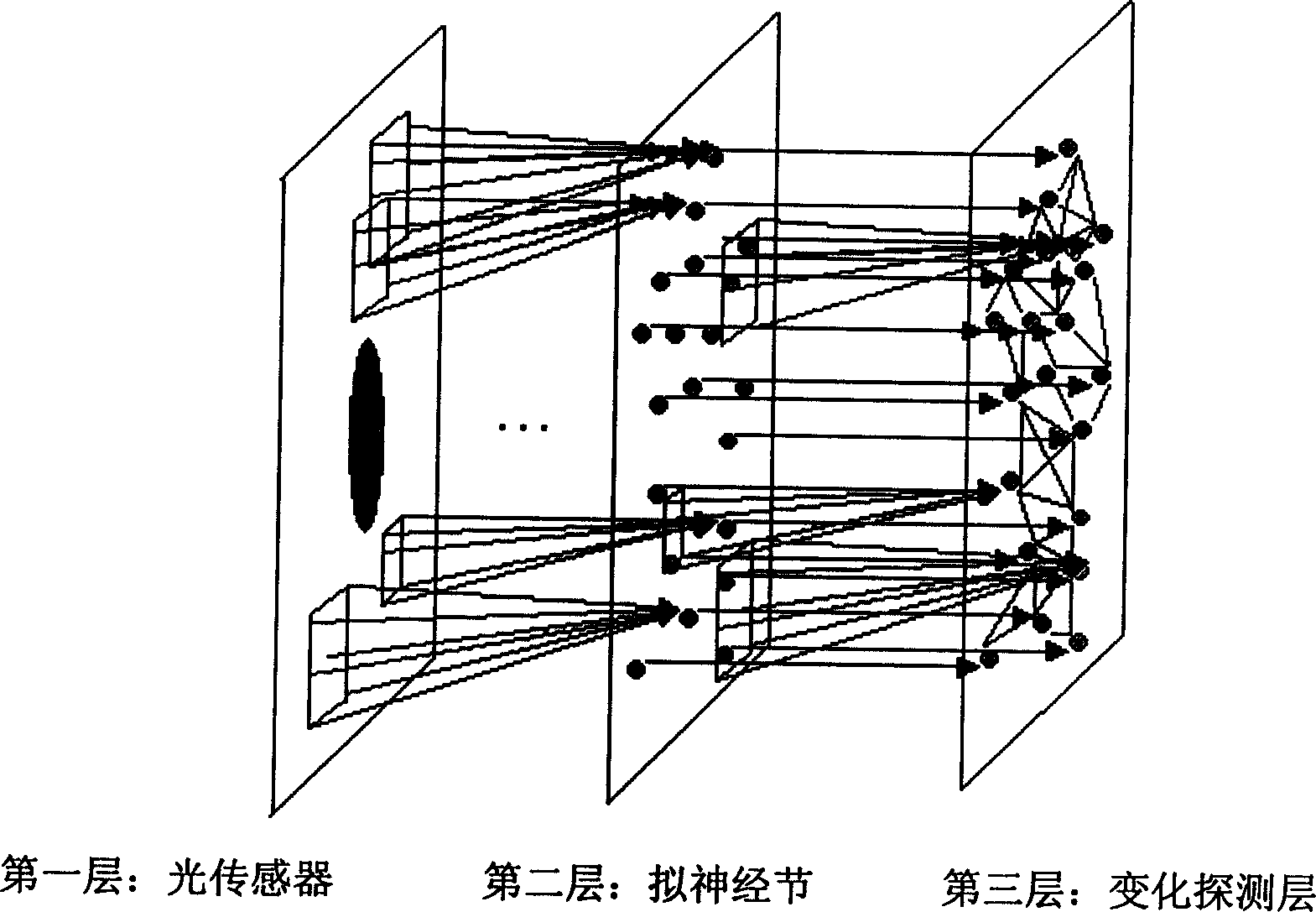Wild size variable hierarchical network model of retina ganglion cell sensing and its algorithm
A retinal ganglion and network model technology, applied in the field of retinal ganglion cell receptive field scale variable hierarchical network model and its algorithm field, can solve problems such as the decrease of visual cone density, and achieve the effect of simplifying complexity
- Summary
- Abstract
- Description
- Claims
- Application Information
AI Technical Summary
Problems solved by technology
Method used
Image
Examples
Embodiment Construction
[0042] 1. Realization of variable-scale receptive field
[0043] In the biological retina, the distribution of the size of the receptive field of ganglion cells on the retina increases rapidly from the central fovea to the periphery, and at the same time, the visual acuity decreases rapidly accordingly. We know that the greater the minimum distance between two stimuli that can be distinguished, the smaller the visual acuity. If the ability to distinguish two stimuli is understood as having two different ganglion cells excited, then the visual acuity is related to the diameter of the receptive field. If the distance between the two stimuli is greater than the diameter of the receptive field of the ganglion cells at the corresponding location, it can be inferred that there will be two different ganglion cells that are respectively excited. Since the visual acuity decreases rapidly as the distance from the central fovea increases, when using a function to describe the relationsh...
PUM
 Login to View More
Login to View More Abstract
Description
Claims
Application Information
 Login to View More
Login to View More - R&D
- Intellectual Property
- Life Sciences
- Materials
- Tech Scout
- Unparalleled Data Quality
- Higher Quality Content
- 60% Fewer Hallucinations
Browse by: Latest US Patents, China's latest patents, Technical Efficacy Thesaurus, Application Domain, Technology Topic, Popular Technical Reports.
© 2025 PatSnap. All rights reserved.Legal|Privacy policy|Modern Slavery Act Transparency Statement|Sitemap|About US| Contact US: help@patsnap.com



